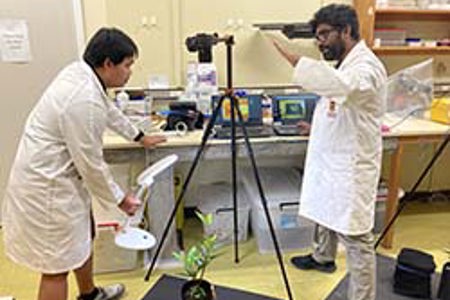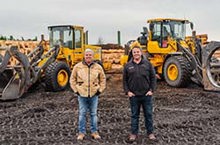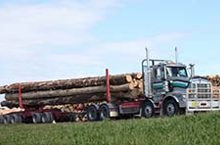
Scientists at Crown Research Institute, Scion, have found a way to quickly detect myrtle rust days before plants show signs of infection, providing hope that nurseries in the future can start control treatment much sooner and stop disease outbreaks in their tracks.
Working in a containment laboratory, the Scion team, led by data scientist Elizaveta Graevskaya, used high precision equipment to detect myrtle rust infection in leaves of rose apple deliberately inoculated with the myrtle rust pathogen.
Using thermal imaging, the team detected decreases in leaf temperature in infected plants at least a day before symptoms could be seen. Transpiration measurements showed the temperature drop was caused by higher rates of water evaporation from the leaves which cooled the leaves down, as the fungal infection punctures individual cells.
The researchers also used a hyperspectral sensor to look at changes in the wavelength of light reflected from infected leaves. Measurements made using hyperspectral cameras can include visible light to shortwave infrared and have proved particularly useful for early detection of diseases. For example, the ratio of blue/green light reflected by infected leaves was noticeably different from healthy leaves up to three days before symptoms were visible. This change suggests that myrtle rust reduces the amount of chlorophyll in infected leaves.
These results have prompted the team to expand their research to include other vulnerable species from the myrtle family, starting with eucalyptus in spring.
The lead author of this research and Scion principal scientist, Mike Watt, presented the findings as part of a webinar series delivered by Beyond Myrtle Rust – a collaborative research programme.
“This sophisticated technology has allowed us to detect myrtle rust infection before it can be seen visually in leaves,” Dr Watt says. “We hope this research can be used to develop a robust detection methodology that will benefit commercial nurseries in the future.”
Scion pathologists, who are some of New Zealand’s leading experts in myrtle rust, have been involved in research to understand the impact of the disease since it was first detected in mainland New Zealand in 2017.
While myrtle rust will be impossible to eradicate, Scion forest geneticist, Heidi Dungey, says this latest research is a major step towards arming nurseries with the tools they need to make better disease-management decisions.
“We are several years away yet, but we can see a time when nurseries will be using hand-held, mobile technology that will be able to detect myrtle rust infections before they are visible,” she says.
The technology also has potential to be used in the field, and at a much larger scale.
Because the thermal and hyperspectral equipment used by the Scion researchers can be mounted on drones, the team hopes to one day develop field-based methods to detect myrtle rust infections rapidly and remotely.
Forest pathologist and research group leader, Stuart Fraser, leads the Ecology and Environment team investigating myrtle rust. He describes the latest research as “incredibly promising.”
“As part of a wider programme of research, we’ve been monitoring myrtle rust’s impact and seasonal progression across the North Island for several years,” he says.
“It’s important that we throw everything at it and use a range of available technologies to accelerate research and management, so we can reduce myrtle rust damage to our most vulnerable plants and landscapes.”
Myrtle rust poses a threat to the country’s most iconic plants, including pōhutakawa, mānuka, and rātā, as well as commercially grown species such as eucalyptus.
Currently, myrtle rust has an uneven distribution across the North Island, and on the top part of the South Island. It has also been reported from Christchurch. It is most likely to be seen during warm, wet conditions.
The disease causes bright yellow-orange powdery pustules on young leaves, shoots, fruits and flowers in the myrtle family, causing deformation of the leaves, and twig dieback. Repeated severe infection can cause decline or death of large trees.









